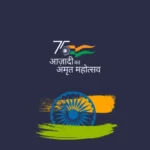The Amritsar Massacre, also known as the Jallianwala Bagh Massacre, took place in Amritsar on April 13, 1919. It was a bloodbath. Protesters gathered in Jallianwala Bagh to demand the release of imprisoned Indian politicians Dr Saifuddin Kitchulu and Dr Satyapaul. A vast number of pilgrims from all over the world came to celebrate Baisakhi, the Sikhs’ most important holiday.
Baisakhi is a Sikh harvest festival that commemorates the start of the Khalsa Srijan Divas, which honours the establishment of Khalsa in the year 1699.
Hundreds of people may have been killed when British forces opened fire on the large, helpless crowd. Many people came from all around to honour this significant day, but it turned out to be a funeral instead.

Jallianwala Bagh Massacre Day: History
Since the outbreak of World War I, there had been growing discontent and instability throughout the country, particularly in the states of West Bengal and Punjab. Many factors contributed to the population’s opposition to British rule, including inflation and excessive taxes, as well as a large number of dead and injured troops. As a result of the escalating civil unrest, the Rowlett Committee was formed in 1919.
Legally, the Rowlett Act made it possible to handle some political affairs without a jury and to detain people without being investigated. During this time, Mahatma Gandhi rose to popularity as a nationalist. Protests over the bill erupted all around the country. The worst of the rioting occurred in Punjab. Protests took place outside the Deputy Commissioner’s house in Amritsar, demanding the release of Satya Pal and Saifuddin Kitchlew ,two key participants of the Indian Freedom Struggle
Violent protests resulted in the destruction of the Town Hall and the railway station, as well as the disruption of the telegraph and telecommunication systems. As a result of the conflict, several European civil servants and individuals were killed. As a result of all of these events, Amritsar fell silent for a few days, while other areas of Punjab were affected. The British government responded by declaring martial law in the vast majority of Punjab. Civil liberties were restricted by prohibiting both public meetings and large-group gatherings.
How many died in Jallianwala Bagh Massacre Day?
Jallianwala Bagh Massacre Day: Formation of Hunter Commission
What happened after Jallianwala Bagh Massascre incident?
This enraged the Native Americans. Many Indians took up the cause of independence after rejecting their previous support to British rule. A state of emergency has been declared across Punjab. General Dyer was acclaimed as a hero by some democrats in the House of Lords as a result of his actions. In July 1920, when the House of Representatives reprimanded him for wrongdoing, he was widely mocked.
Dyer was never hauled before a court-martial by the army, and his only punishment was to be fired from his current position, refused a promotion, and barred from working in India in the future. Dyer later left the service and died in 1927, having committed unrepentant and shamelessly war crimes. Despite the fact that the poet Rabindranath Tagore and other national luminaries were appalled by the incident, it was widely condemned.
Following the massacre, the British Army’s military engagement in civilian matters was re-evaluated, with a focus on reducing the use of violence where it was required. Furthermore, the Indian public has lost faith in the British government’s goals. Jallianwala Bagh Massacre, which occurred in 1920-22, spread Non-Cooperation Movement ideas and consciousness. In 2019, the British government expressed “disappointment” about the Jallianwala Bagh Massacre, for which no official apology has been issued.

